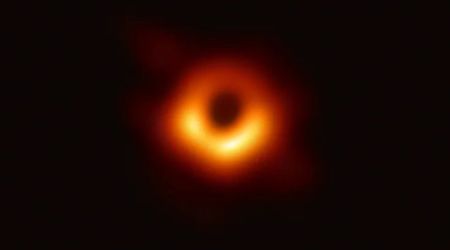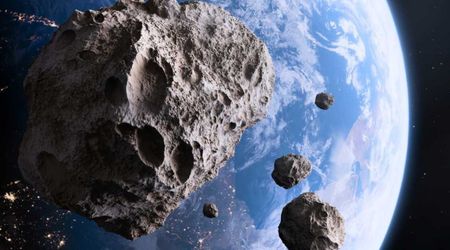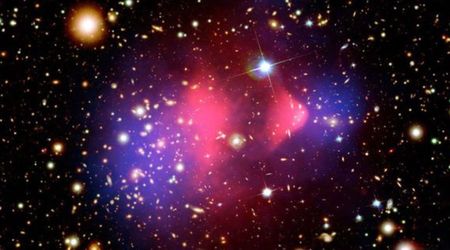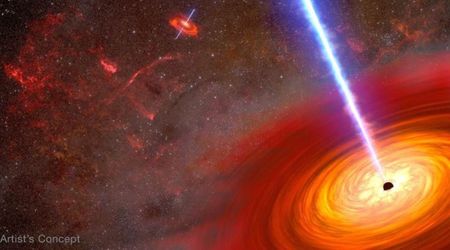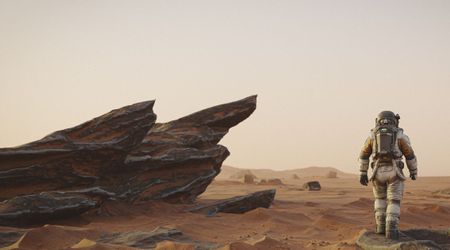How Big is The Sun?


With a radius of 432,687 miles and a diameter of 864,000 miles, our beloved star, the Sun, is the biggest celestial object in the solar system. The substantial size and mass of the Sun enable it to generate an incredible amount of gravitational force that keeps the planets of the solar system in orbit around it as it travels around our galaxy, the Milky Way.
In this article, we will compare the size of the Sun against the size of the planets in the solar system as well as against the size of the largest known stars in the universe. We are also going to calculate the time it would take to travel around the Sun using different means of transportation. Who said astronomy couldn't be fun?
Table of Contents

- How is the size of the sun measured?
- How does the size of the Sun affect our solar system?
- The size of the Sun compared to the planets of the solar system
- The size of the Sun compared to the largest known stars
- Will the Sun get any bigger?
- Frequently Asked Questions
How is the size of the sun measured?
The very first person to have attempted to calculate the size of the sun was Aristarchus of Samos, a Greek mathematician and astronomer from the 3rd century. He used the correct geometric principles but made some slightly incorrect measurements based on observations he made from Earth, without any instruments. His estimate of the size of the Sun turned out to be wrong but paved the way for future attempts.
A few centuries later, we know much more about trigonometry and the principle of parallax. We also have access to far more advanced and precise tools. In 2003 and 2006, the radius of the Sun was measured with a very high level of precision by observing the transit of Mercury in front of the sun. Scientists used the instruments onboard the Solar and Heliospheric Observatory (SoHO) to make the measurements and confirmed that the radius of the Sun is 432,687 miles.
You can calculate the size of the sun from your backyard by building a small DIY pinhole projector. Follow the instructions in this video: Let's Measure the Diameter of the Sun!
How does the size of the Sun affect our solar system?
The present state of the solar system depends on the highly complex way in which all of the gravitational force produced by numerous astronomical objects (planets, asteroids, moons, etc.) interact with each other. The sun is the main powerhouse in this system since it holds 99.8% of the total mass of the Solar System.
The Sun is so massive that the gravitational force it generates is powerful enough to hold the entire solar system together. But what would happen if the Sun was smaller or bigger than its current size? How would this impact the solar system?
To begin with, its gravitational field would be significantly altered, leading to a drastic change in the position of the planets. The circumstellar habitable zone (goldilocks zone) would extend over a completely different radius around the Sun, and this would have a significant impact on the emergence of life on Earth.
If the Sun was larger, maybe Mars would still be a habitable planet? Or, if it was smaller, maybe Venus would have been home to life rather than Earth.
The size of the Sun compared to the planets of the solar system
To fully understand the scale of our sun, let's compare its size to each planet of our solar system.
- Mercury: The Sun is 277 times larger than Mercury. 21 million Mercury-sized planets could fit inside the Sun.
- Venus: The Sun is 115 times larger than Venus. 1.5 million Venus-sized planets could fit inside the Sun.
- Earth: The Sun is 109 times larger than Earth. 1.3 million Earth-sized planets could fit inside the Sun.
- Mars: The Sun is 207 times larger than Mars. 7 million Mars-sized planets could fit inside the Sun.
- Jupiter: The Sun is 11 times larger than Jupiter. 1,000 Jupiter-sized planets could fit inside the Sun.
- Saturn: The Sun is 12 times larger than Saturn. 1,600 Saturn-sized planets could fit inside the Sun.
- Neptune: The Sun is 27.7 times larger than Neptune. 21,000 Neptune-sized planets could fit inside the Sun.
- Uranus: The Sun is 27.4 times larger than Uranus. 22,000 Uranus-sized planets could fit inside the Sun.
- Bonus: Pluto: The Sun is 585 times larger than Pluto. 200 million Pluto-sized dwarf planets could fit inside the Sun.

The size of the Sun compared to the largest known stars in the universe
When we compare the size of the Sun to the size of the planets, it becomes clear that our local star is indeed an astronomical behemoth. However, the Sun is classified as a G-type main-sequence star, more usually referred to as a "yellow dwarf star". In reality, our beloved star is not that imposing when compared to some of the largest known stars in the universe.
- Aldebaran is a red giant located 65 lightyears away. It is 44 times larger than our sun and 400 times more luminous. 86,350 Suns could fit inside Aldebaran!
- Rigel is a blue supergiant located 864.3 light-years away. It is 75 times larger than our sun and 100 000 times more luminous. You could fit 474,552 Suns inside Rigel!
- Antares is a red supergiant located 555.5 lightyears away. It is 685 times larger than our sun and 10,000 times more luminous.
- Betelgeuse is a red supergiant located 642.5 lightyears away. It is 1,400 times larger than our sun and 100,000 times more luminous. 1.06 million Suns could fit inside Betelgeuse!
- VY Canis Majoris is a red hypergiant located 3,900 lightyears away. It is 1,420 times larger than our sun and 270,000 times more luminous. It is estimated that around 3.2 billion suns could fit inside of VY Canis Majoris!
- UY Scuti is a red supergiant located 5,219 lightyears away. It is 1,700 times larger than our sun and 340,000 times more luminous. Around 5 billion Suns could fit inside UY Scuti.
- Stephenson 2-18 is a red supergiant located 20,000 lightyears away. It is 2,150 times larger than our sun and 440,000 times more luminous. Around 10 billion Suns could fit inside Stephenson 2-18.

How long would it take to travel around the Sun?
We know that the sun has a diameter of 864,000 miles. Multiplying this number by pi will give the sun’s circumference: 2,713,406 miles. Another way to appreciate the size of the Sun is by calculating the time it would take to travel around it using different means of transportation. Yes, we are that geeky!
- A human walking non-stop at the speed of about 5 km/h (3 mph) would take about 100 years.
- A car driving non-stop at an average speed of 100 km/h (60 mph) would take about 5 years.
- A passenger plane flying non-stop at an average speed of 965 km/h (600 mph) would take about 6 months.
- A rocket flying non-stop at an average speed of 28,324 km/h (17,600 mph) would take about 6.4 days.
- At the speed of light, it would take 9 seconds to make the full trip around the Sun.
Will the Sun get any bigger?
The Sun will indeed become much larger in the future. There will come a time when the perpetual balance between the nuclear energies pushing outward and the gravitational forces pulling inward will be destabilized. As soon as the Sun has consumed most of its hydrogen reserve, the surface of the Sun will progressively expand up to a size that covers the entire orbit of Mars, engulfing Mercury, Venus and Earth in the process.
After remaining a red giant star for about a billion years, the Sun will shrink again and become a white dwarf when its helium supply is depleted. We have no reason to be concerned, however, since these events will not take place for at least another 5 billion years.
Frequently Asked Questions
How big does the Sun appear to be in the Sky?
The Sun has an angular size of about 0.53 degrees or about 1/4 of the width of your thumb when viewed in the sky. Funnily enough, it is the same angular size as the Moon. That's because although the Sun is 400 times larger than the moon, it is located 400 times further away.
What is the biggest star in the universe?
The biggest known star was for a long time UY Scuti (1700 times bigger than our sun). But it has recently been surpassed by Stephenson 2-18, a red supergiant 2,150 times larger than our sun.
Is the sun getting bigger?
Although the sun is currently in a relatively quiet phase of its life, it will grow to become a red giant in approximately 5 billion years.


